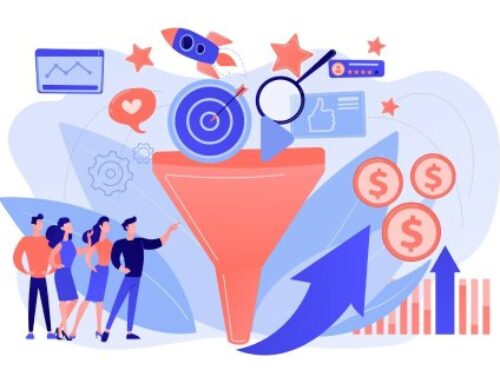
When it comes to lead generation services in India, pay-per-lead models often seem appealing at first glance. For many businesses, especially in the B2B space, the idea of paying only for tangible results like meeting requests or leads can be enticing. However, the reality of these services is often far from the ideal they promise. At the Sales Design Institute, we’ve witnessed the aftermath of these campaigns time and time again. Companies are left disillusioned, questioning the effectiveness of lead generation altogether.
Having executed over 800 successful campaigns across various industries, geographies, and market segments, we’ve had countless conversations with CEOs, founders, and heads of sales who find themselves frustrated by their experiences with pay-per-lead services. What they reveal is concerning, not just because these campaigns fail to deliver results, but because they often leave long-lasting damage on their ability to generate leads and build meaningful relationships. Today, we’re shedding light on the hidden costs of pay-per-lead lead generation services in India and why they could be hurting your B2B business.
A Common Story: The Aftermath of Pay-Per-Lead Campaigns
Picture this. A company invests in a pay-per-lead model hoping for quick wins, only to find themselves buried in confusion when their campaign fails to deliver. They typically come to us seeking solutions after enduring a challenging experience. They’re frustrated and sometimes even skeptical about lead generation altogether, having lost trust in the process and the players involved.
When we dig deeper into their past campaigns, here’s what we often uncover
Mass Outreach Without Precision: The number of outreach attempts to potential clients is alarmingly high, often with poor delivery and read rates. Worse, almost 30% of the audience targeted isn’t even relevant to their business goals.
Misaligned Targeting: While the initial targeting may align with the client’s objectives, it quickly spirals out of control. Campaigns start targeting irrelevant industries, geographies, and designations. Campaign managers focus entirely on volume rather than quality, leading to a broader, less impactful approach.
Desperate Messaging: As responses dwindle, the messaging becomes increasingly desperate. Emails and messages grow longer, packed with over-the-top promises and multiple service solutions. Instead of nurturing leads, the tone becomes pushy, clickbait-like, and sales-driven.
Mishandled Senior Stakeholder Conversations: In B2B sales, engaging senior stakeholders is crucial. Yet, we’ve seen these conversations handled poorly in pay-per-lead models. Either the approach is overly aggressive, or follow-ups are lackluster, leading to missed opportunities and negative impressions.
These findings reveal a pattern of negligence and shortsightedness in how pay-per-lead campaigns are run, culminating in a lack of meaningful results.
The Problem With Pay-Per-Lead Models
Pay-per-lead services typically start with a semblance of strategy. The targeting and messaging align with the initial plan, giving businesses hope that they’re on the right path. But as the campaign progresses, things often take a turn for the worse. Here’s what typically happens:
The Desperation Spiral: With the pressure to deliver results quickly, these agencies often veer off course. Instead of sticking to the agreed-upon plan, campaign managers expand their targeting to include junior-level designations, smaller companies, or industries that aren’t relevant. Messaging becomes more generic and clickbaity, all in an attempt to land a meeting or a response.
Burning Through Good Leads: The short-term focus of these campaigns means that high-potential accounts and leads are often mishandled. Complex conversations with top-tier decision-makers are either neglected or poorly executed, leaving potential clients with a negative impression.
Shallow Interactions: True B2B sales require trust, consistency, and nurturing. In pay-per-lead campaigns, the emphasis is only on securing a meeting or lead. The process of building rapport, addressing questions, and guiding prospects through a thoughtful sales process is almost entirely absent.
Irreparable Damage: The most significant cost of pay-per-lead campaigns is the long-term harm they can do to your reputation and pipeline. Burning through leads in pursuit of short-term gains means alienating future prospects. In enterprise sales, where opportunities are often limited, this can be catastrophic. Contacts who may have been valuable in the future are lost due to an overly aggressive or disorganized approach.
Why Quality Matters in B2B Lead Generation
If you’re serious about building a sustainable B2B business, it’s crucial to understand that lead generation is not just about securing leads. It’s about creating meaningful conversations that pave the way for lasting relationships. Here’s why quality must always trump quantity.
The Role of Trust: B2B sales often involve multiple touchpoints, questions, and even rejections before a deal is closed. This process requires patience and commitment, which pay-per-lead models tend to overlook. Trust and credibility are built through consistent and thoughtful interactions, not transactional behaviors driven by immediate payouts.
Strategic Targeting: Effective lead generation services in India prioritize precision. They focus on reaching the right industries, geographies, and designations, ensuring every outreach attempt aligns with your business goals. This level of targeting is essential for generating leads that convert into meaningful conversations.
Nurturing Leads: B2B relationships aren’t developed overnight. From the initial outreach to the final closure, every step involves creating value and addressing the prospect’s needs. A meaningful lead generation strategy includes nurturing prospects, understanding their pain points, and positioning your product or service as the solution.
The Real Cost of Pay-Per-Lead Campaigns
While pay-per-lead models might seem cost-effective on paper, the hidden costs can quickly outweigh the initial savings. From damaged reputations to burnt-out pipelines, the risks are too significant for serious B2B businesses to ignore. Instead, investing in quality lead generation services in India with a sharp focus on strategic targeting, transparency, and trust can set your business up for long-term success. If you’re a CEO, founder, or head of sales, it’s time to rethink your approach to lead generation. Don’t be swayed by the allure of quick wins promised by pay-per-lead models. Prioritize strategies that deliver quality outcomes, foster trust, and align with your long-term business goals.
At Sales Design Institute, we’ve seen firsthand the difference a well-executed lead generation strategy can make. By focusing on meaningful conversations rather than short-term results, we help B2B businesses unlock sustained growth and foster lasting relationships with their prospects.



